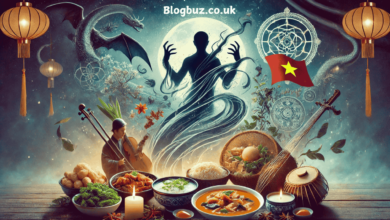The Multifaceted Meaning and Significance of Clochant

The term clochant carries a rich tapestry of meanings and historical significance, from architectural elements in French and Irish culture to ancient building techniques. This article explores the diverse clochant applications, delving into its architectural, cultural, and linguistic roots.
Etymology and Basic Definition
The word clochant derives from the Old French “cloche,” meaning “bell.” Modern French primarily refers to a bell tower or steeple, a structure that houses bells, typically seen in churches and religious buildings. The bell towers are architectural marvels and serve as cultural symbols, marking significant events and calling communities to gather.
Clochant in French Architecture
In French architecture, clochant describes the vertical structures that house bells, often atop churches or cathedrals. These structures have played a crucial role in religious and community life. Bells housed within these towers, known as “cloches,” are rung to signal various events, from calling the faithful to prayer to marking the passage of time. Notable examples include Notre-Dame de Paris bell towers and other iconic French cathedrals.
Clochant in Irish Culture: Bells and Beehive Huts
In Irish culture, clochant refers to traditional bells in various ceremonies and rituals. These bells, steeped in legend and history, are often associated with saints like Saint Patrick, who is said to have used a bell (known as “clochan” in Old Irish) to call people to worship. The sound of these bells holds a deep cultural resonance, symbolizing spiritual awakening and community gathering.
Clochant is also linked to the Irish term “clochán,” referring to ancient beehive huts. These dry stone structures, characterized by their dome-like shape, were primarily used by monks in early Christian Ireland. The construction technique, involving corbelled stone layers, showcases early Irish builders’ sophisticated understanding of architecture and engineering. These huts are predominantly found in southwestern Ireland, particularly in places like Skellig Michael, and have become emblematic of Ireland’s monastic heritage.
Architectural Significance and Preservation
The architectural significance of clochants and “clocháns” extends beyond their functional roles. In France, bell towers often serve as landmarks and are integral to the skyline of historic towns and cities. They represent religious faith and medieval builders’ artistry and engineering prowess. Many of these structures are now protected as historical monuments, reflecting their cultural and historical value.
In Ireland, the preservation of clocháns is vital for understanding the country’s early Christian period. These structures provide insight into the monastic way of life, showcasing the austere conditions under which monks lived and worked. Preservation efforts include protecting these sites from natural decay and human interference, ensuring they remain a testament to Ireland’s rich architectural heritage.
Cultural and Literary References
Clochant has a prominent place in cultural and literary works. Bell towers are frequently mentioned in French literature and history, symbolizing various themes from religious devotion to communal unity. In Irish literature, clocháns and bells are often referenced, highlighting their importance in the spiritual and everyday life of the people. For instance, the ancient poem “Pangur Bán” mentions a “sweet-voiced bell,” likely referencing the soothing and spiritual significance of such sounds in monastic settings.
Modern Interpretations and Uses
In contemporary times, the term clochant continues to find relevance. Modern architecture sometimes incorporates elements reminiscent of traditional bell towers, blending historical aesthetics with modern design. In media, the unique visual appeal of structures like clocháns has captured the imagination of filmmakers and artists, appearing in films such as “Star Wars: The Last Jedi,” where they inspired ancient structures inhabited by monks.
Moreover, the musical aspect of bells continues to be celebrated. The sound of church bells remains a staple in many cultures, marking celebrations, mourning losses, and essential moments. The resonance of these bells transcends religious contexts, becoming a universal symbol of harmony and continuity.
Conclusion
The term clochant encapsulates many meanings, from architectural structures in France to cultural symbols in Ireland. Whether referring to the iconic bell towers that dot the French landscape or the ancient beehive huts of Ireland, clochant represents a rich blend of history, culture, and architectural achievement. The preservation and appreciation of these elements are crucial for maintaining the cultural heritage they embody, ensuring that inspiration and knowledge from these enduring symbols may be found for future generations.
FAQs on Clochant
What is the basic definition of clochant?
Clochant primarily refers to a bell tower or steeple in French, a structure that houses bells typically found in churches and religious buildings.
Where does the term clochant originate from?
The term clochant derives from the Old French word “cloche,” meaning “bell.” It has evolved to denote structures associated with bells, such as bell towers.
How is clochant used in French architecture?
In French architecture, clochant describes vertical structures that house bells, often atop churches or cathedrals. These bell towers are significant cultural symbols, marking events and calling communities to gather.
What does clochant refer to in Irish culture?
In Irish culture, clochant refers to traditional bells in ceremonies and rituals. The term also relates to “clochán,” referring to ancient beehive huts made from dry stone, used primarily by monks in early Christian Ireland.
What are clocháns, and where are they commonly found?
Clocháns are ancient beehive-shaped huts constructed using corbelled stone layers. They are predominantly found in southwestern Ireland, especially in places like Skellig Michael, and are significant for understanding Ireland’s monastic heritage.
You May Also Read: Unveiling the Mystery of Kääntäh: A Deep Dive into the Unique Concept




